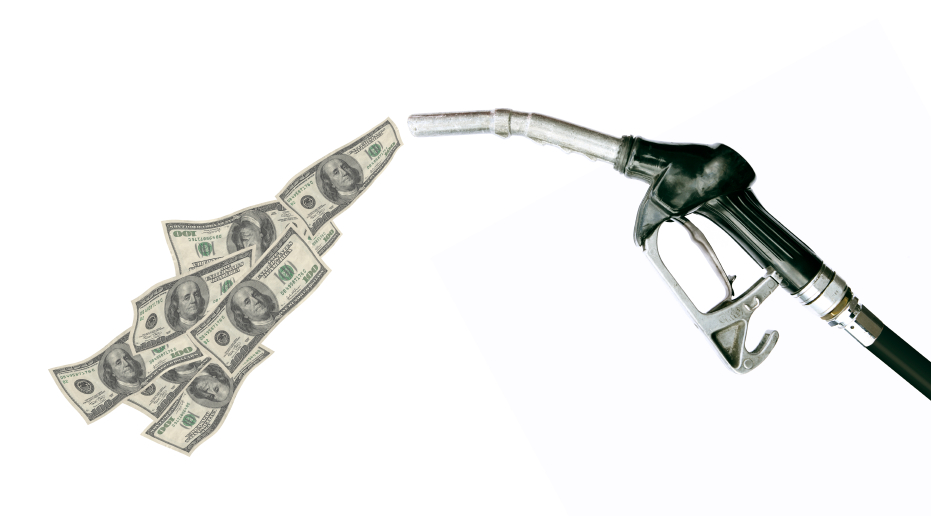Barbie never said "Math is hard!"
The talking doll did, notoriously, say "Math class is tough!" in 1989, sparking a media firestorm over gender roles in childrens' toys and then a voluntary recall by Mattel for offended parents.
Reworded, however, the point remains accurate: many people don't understand math.
DON'T MISS: Costs to meet fuel-economy standards even lower than EPA says: analysis
That includes fuel economy, which is how the U.S. and some other countries measure a car's energy efficiency.
In Europe, the measurement is fuel consumption, or how much gasoline it takes to go a specific distance: 5 liters per 100 km, for example.
The advantage to this approach is that it correlates directly to how much a driver spends to fuel up the car.

Gas pump
The U.S. method of using fuel economy, on the other hand, is the inverse: how far a car travels on a set amount of gasoline: 25 miles per gallon, for example.
The problem there is that MPG is not a linear scale, and a majority of Americans don't understand that.
Here's the proof, in the form of a question: Which saves more gasoline, going from 10 to 20 mpg, or going from 33 to 50 mpg?
READ THIS: Miles-Per-Gallon Is Just Stupid. No, Really, It Is. (Apr 2011)
As we wrote six years ago, in the only article that ever got this site actual death threats (for being anti-environmental):
If you're like most Americans, you picked the second choice. But, in fact, that's exactly backwards. Over any given mileage, replacing a 10-mpg vehicle with one that gets 20 mpg saves five times the gasoline that replacing a 33-mpg vehicle with one that gets 50 does.
Don't believe it? Here’s the math. If you replace your old 1990s SUV (10 mpg) with a new 2009 Chevrolet Tahoe Hybrid (20 mpg), over 100 miles you cut your gasoline consumption from 10 gallons to 5. That saves you 5 gallons.
If you swap your old Toyota Echo (33 mpg) for a new 2011 Toyota Prius (50 mpg), that only saves you 1 gallon over the same distance—down from 3 to 2 gallons.

2016 Toyota Prius Two Eco
That principle is why any changes to the 2022-2025 EPA emission limits (and the corresponding NHTSA fuel-economy requirements) would have far less impact on actual emissions and fuel use than most people understand.
The real-world impact was laid out last month in an opinion piece in Forbes by Sam Ori, on behalf of the Energy Policy Institute at the University of Chicago.
It's worth reading, because it injects some mathematical analysis into a topic largely marked by high-pitched rhetoric on both sides.
CHECK OUT: Automakers seek deal to delay EPA's 2022-2025 emission rules
The facts are that the EPA finalized emission-reduction regulations applying to vehicles in model years 2022 through 2025 on a schedule much quicker than automakers had expected.
Meanwhile, the assumptions used in 2010 and 2012 to model the vehicle market proved to be weighted far too heavily toward passenger cars, whereas in reality the market has skewed heavily toward utility vehicles and other trucks.
EPA administrator Scott Pruitt (the noted denier of climate science, we should point out) announced that the comment period on those regulations would be reopened—signaling that they'll be revisited.
![The White House, Washington, D.C. [Creative Commons license by dcjohn] The White House, Washington, D.C. [Creative Commons license by dcjohn]](https://images.hgmsites.net/lrg/white-house_100170583_l.jpg)
The White House, Washington, D.C. [Creative Commons license by dcjohn]
Environmental groups like the Sierra Club, meanwhile, have used alarmist language to describe a meeting last week between Pruitt and automakers as "dismantling lifesaving fuel and emissions saving protections."
In reality, industry analysts expect carmakers to reach a deal with the EPA to delay or lessen only the regulations for 2022 through 2025—since they've already invested hundreds of millions of dollars to meet the increases from 2012 through 2021.
As Ori points out, "According to the EPA’s own estimates, the overwhelming majority—nearly 90%—of originally projected fuel savings under the current policy will have been locked into place by 2021."
The 2012 fleet average of 28.7 mpg will have risen to 41 mpg by 2021, saving 2,200 gallons of fuel per vehicle over 200,000 miles. But the rise for 2025 was to 46.2 mpg, saving only an additional 430 gallons—less than one-fifth the previous savings.
"In other words, the biggest benefits are captured at the beginning." That's already a done deal.
Math is hard.
[hat tip: Reuben Munger]
_______________________________________













